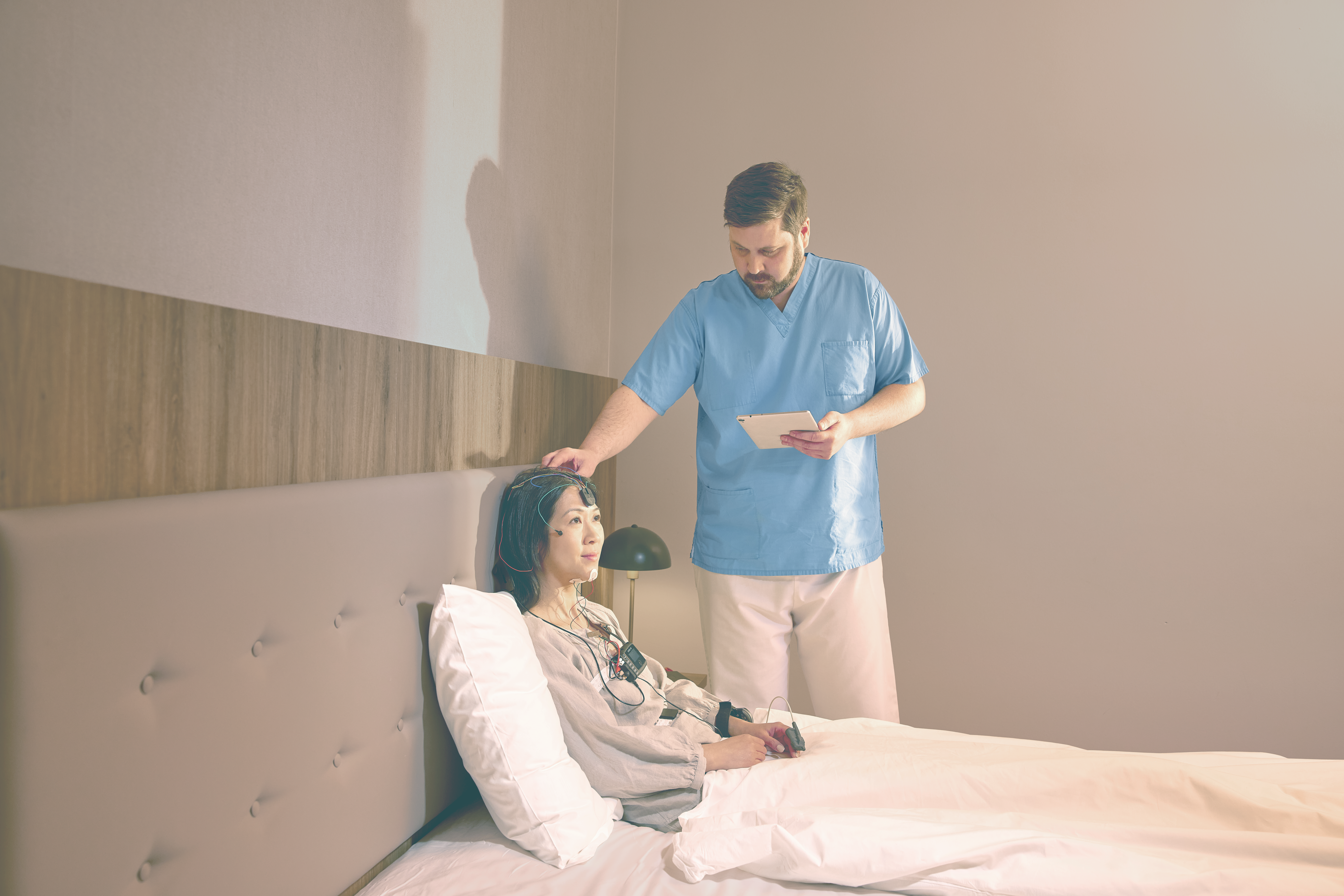Nearly one in five women have obstructive sleep apnea¹, but nine out of ten women who have obstructive sleep apnea remain undiagnosed.²
When you think of obstructive sleep apnea (OSA), the sound of a patient gasping for air in the middle of the night might come to mind. The image of an overweight male patient might come to mind. However, these classic presentations of OSA don’t often ring true for women with sleep disordered breathing.
Women often don’t present with typical symptoms. The loud snoring, excessive daytime sleepiness, and witnessed apneas often indicative of OSA in male populations, might be entirely absent in women who have moderate to severe disease.
To raise awareness about the differences and challenges of diagnosing women with OSA, Nox Medical recently teamed up with the AAST to organize the webinar “Exploring Gender Disparities in Sleep Testing: Diagnosing Obstructive Sleep Apnea in Women.”
A key takeaway from the webinar was that the difference in symptom presentation between men and women creates a challenge for healthcare providers who are trying to identify those who need diagnostic sleep testing. As a result, female patients might go many years before seeking care in a sleep clinic.
“What makes this so profound is that untreated sleep apnea has so many links to chronic medical conditions that we see, such as heart disease, heart failure, stroke, hypertension, diabetes, obesity,” says Dr. Heidi Doss Riney, MD, chief medical officer at Nox Health and medical director at Fusion Sleep Center in Georgia.
“There is this perception of what sleep apnea should look like and that is something that we are trying to change,” says Riney during the recent webinar.
As many as 40 percent of women who have moderate to severe OSA are not going to have classic symptoms you think of when you think of the typical OSA patients. Women more often present with muscle pain, fatigue, lack of energy, insomnia, mood disturbances, and headaches.³,⁴
“There is often years from the start of a woman having their symptoms to the time that they actually come to a sleep clinic,” says Riney.
This was the case for founder of Valley Sleep Center, Lauri Leadley, who also spoke during the webinar, about both her experience as an OSA patient and an entrepreneur running her own sleep labs. In her 30s she was a sleep technologist with a hectic schedule, and a bad case of insomnia. Thin and active, she didn’t suspect that her insomnia was actually related to OSA. When Leadley got diagnosed she was experiencing anxiety and brain fog. When she finally treated her sleep apnea, her symptoms subsided
“My message to everyone is just to listen and ask. I did not look like the typical sleep apnea patient when I got diagnosed. You would never think in a million years that I have an AHI of 60, but I do,” says Leadley. “I am 5 ‘9 and 140 pounds and I look like the picture of health, but it’s my anatomy, it’s hereditary,” she says during the webinar. “I just had all the factors that nobody paid attention to and here I was a sleep tech and didn’t find it a priority. It took me a long time.”
Leadley’s story is far from unique when it comes to female OSA patients. According to The Alliance of Sleep Apnea Partners, one in five women have sleep apnea, but nine of ten remain undiagnosed. Many women don’t realize that their symptoms, including insomnia, muscle pain, morning headaches and fatigue are related to disrupted breathing during sleep. Additionally, when women go into menopause, they have the same risk of OSA that men do. These symptoms may be incorrectly attributed to menopause itself. To more quickly identify women who have sleep disordered breathing, Riney suggests that clinicians should consider expanding the questions they ask when evaluating female patients for diagnostic sleep testing.
While snoring is still one of the most sensitive indicators for OSA in both men and women, there are gender specific questions that should be posed. More women with OSA may experience nocturia, insomnia, morning headaches, and nocturnal heartburn, according to Riney.
“We want to look at all aspects of sleep and not just the classic symptoms we think of. And, also, knowing that with women, it does get worse as they get older, especially around menopause,” says Riney.
Even though women may have more mild sleep apnea on testing, they have significant disruptions in quality of life and they get significant improvements in those symptoms after therapy.
For those who missed the live discussion or would like to revisit the insights shared, you can watch the full webinar recording on our YouTube channel.
References:
- Franklin KA, Lindberg E. Obstructive sleep apnea is a common disorder in the population-a review on the epidemiology of sleep apnea. J Thorac Dis. 2015 Aug;7(8):1311-22. doi: 10.3978/j.issn.2072-1439.2015.06.11. PMID: 26380759; PMCID: PMC4561280.
- Society for Women’s Health Research. (n.d.). Women & Sleep Apnea. Retrieved from https://www.apneapartners.org/_files/ugd/0e84d6_634e5ef1841048ebb2ac7bfd657b9b9a.pdf
- Wimms A, Woehrle H, Ketheeswaran S, Ramanan D, Armitstead J. Obstructive sleep apnea in women: specific issues and interventions. Biomed Res Int. 2016;2016:1764837.
- Alison J. Wimms, Julia L. Kelly, Christopher D. Turnbull, Alison McMillan, Sonya E. Craig, John F. O'Reilly, Annabel H. Nickol, Meredith D. Decker, Leslee A. Willes, Peter M.A. Calverley, Adam V. Benjafield, John R. Stradling, Mary J. Morrell, on behalf of the MERGE Trial Investigators. Mild obstructive sleep apnoea in females: post hoc analysis of the MERGE randomized controlled trial. ERJ Open Research Jan 2024, 10 (1) 00574- 2023.
Topic: Webinar





